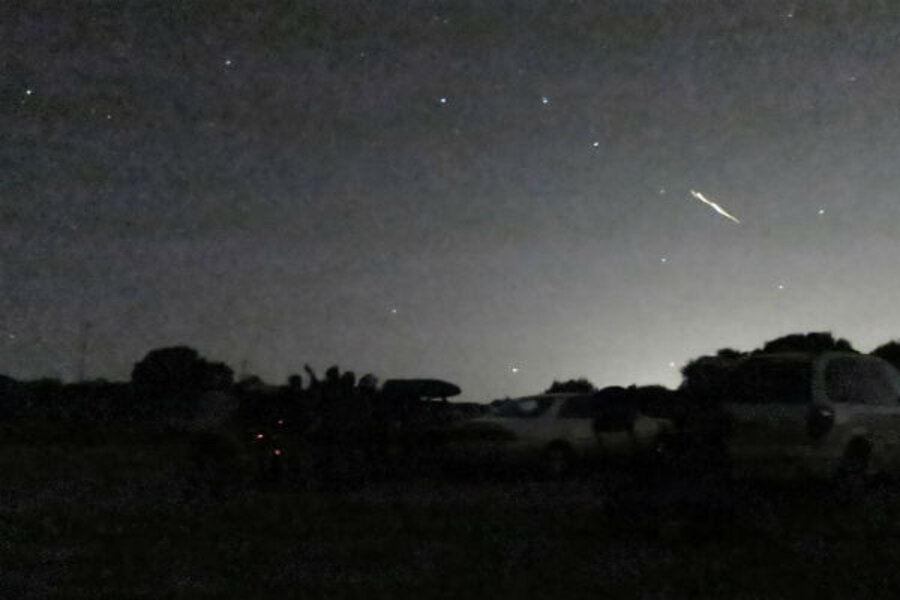Orionid meteor shower: Wake the kids, make a memory
Loading...
This weekend astronomers at NASA have promised Americans a rare glimpse of a heavenly event – the Orionid meteor shower – and with it, the opportunity for parents to join their children in a sense of wonder they may not have experienced since their own childhoods.
Some parents undoubtedly remember, as kids, waking up in the middle of the night, stepping outside into the forbidden dark, wrapped in robes and blankets for a once-in-a-lifetime view of Halley's Comet passing across the sky. That was 1986 and Halley's Comet won't be visible from earth again for 50 years.
QUIZ YOURSELF: Are you a helicopter parent?
However, this week, fragments of the famed comet have started to splash across the night sky. They started appearing on Oct.17, but are expected to peak tonight and early into Sunday morning dropping as many as 60 visible meteors an hour (visibility, of course, depends on weather).
For families, the shower brings a chance to break from routine and share a profound experience.
It does not matter if parents know that the shooting stars are chunks of frozen rock that originated somewhere past the distant star Betelgeuse as part of the annual phenomenon called the Orionids.
Kids always ask questions – that’s what children do. While adults frequently feel that they should be ready with answers, sometimes a simple "I don't know," can be just as instructional as a researched response.
The admission of ignorance from a respected adult can be liberating for children who spend a large portion of their day memorizing facts. Those three little words, "I don't know," are a reminder that the world as a whole is unknowable. While children easily learn to regurgitate facts that have been handed to them in neat little packages, true learning, and ultimately understanding, is a process that begins with inquiry.
Happenings in the night sky have piqued human curiosity for centuries, providing our ancestors with temporal scaffolding and a celestial backdrop for ritual and religion.
Today, however, in a world where it seems that the answer to everything lies at the end of a Google search, the heavens have receded into the distance. The pinpoints of light shed by stars pale in comparison with the lure of the glowing screens of televisions, laptops, and cell phones.
Tonight, parents have a chance to recapture their children's attention.
Because light from the moon makes it difficult to see the meteors, the best view will be after the moon sets around 11 p.m. EST; a time children rarely get to see. Waking them up in the middle of the night in and of itself creates a tone for the event, setting the stage for a magical moment that will probably last their lifetimes.
That moment, however brief, when parent and child gaze in awe as remnants of a distant world cross over into theirs, sharing gasps, locking astonished eyes, squeezing hands in exhilaration, that is the stuff that memories are made of.
The Christian Science Monitor has assembled a diverse group of the best family and parenting bloggers out there. Our contributing and guest bloggers are not employed or directed by the Monitor, and the views expressed are the bloggers' own, as is responsibility for the content of their blogs.







